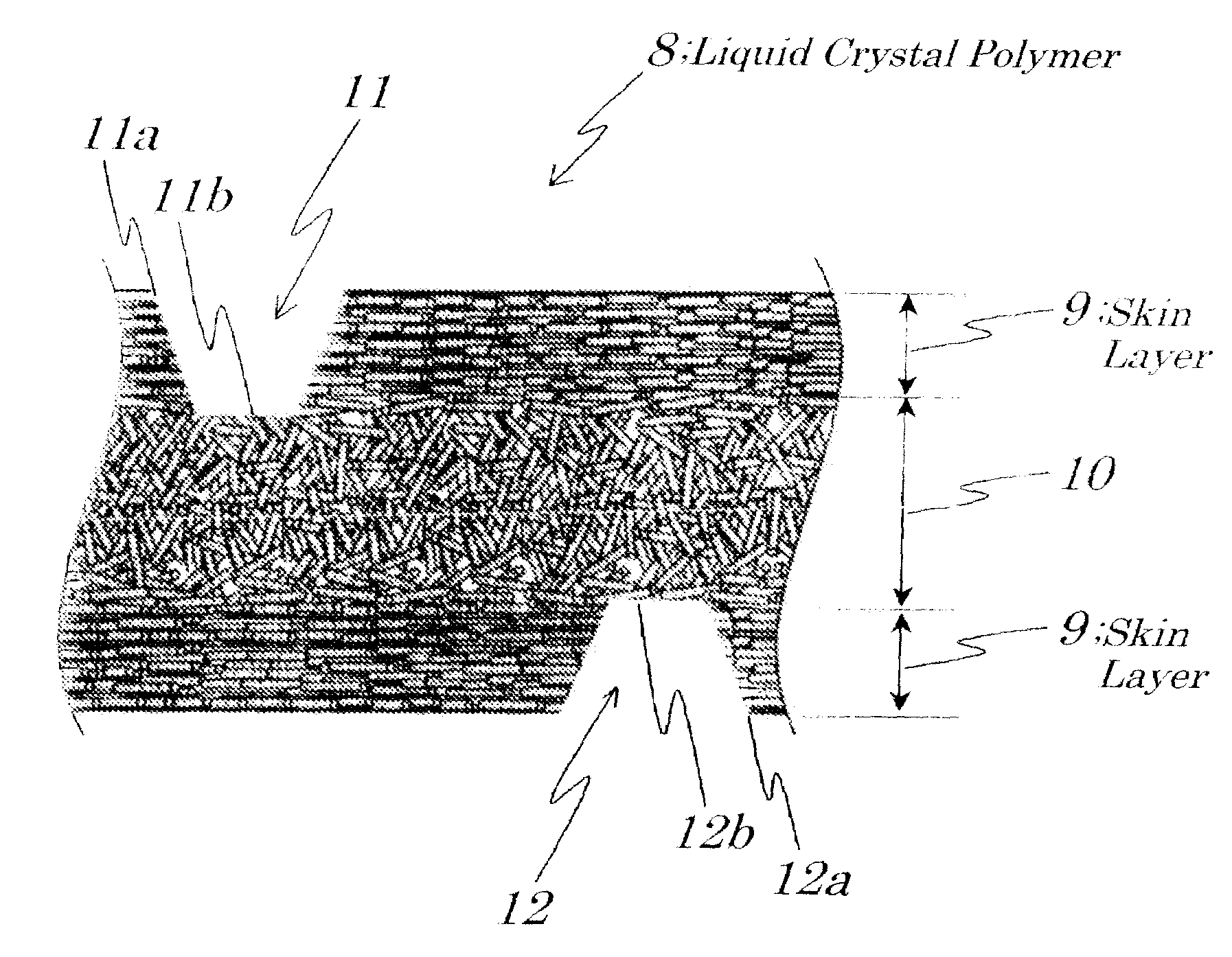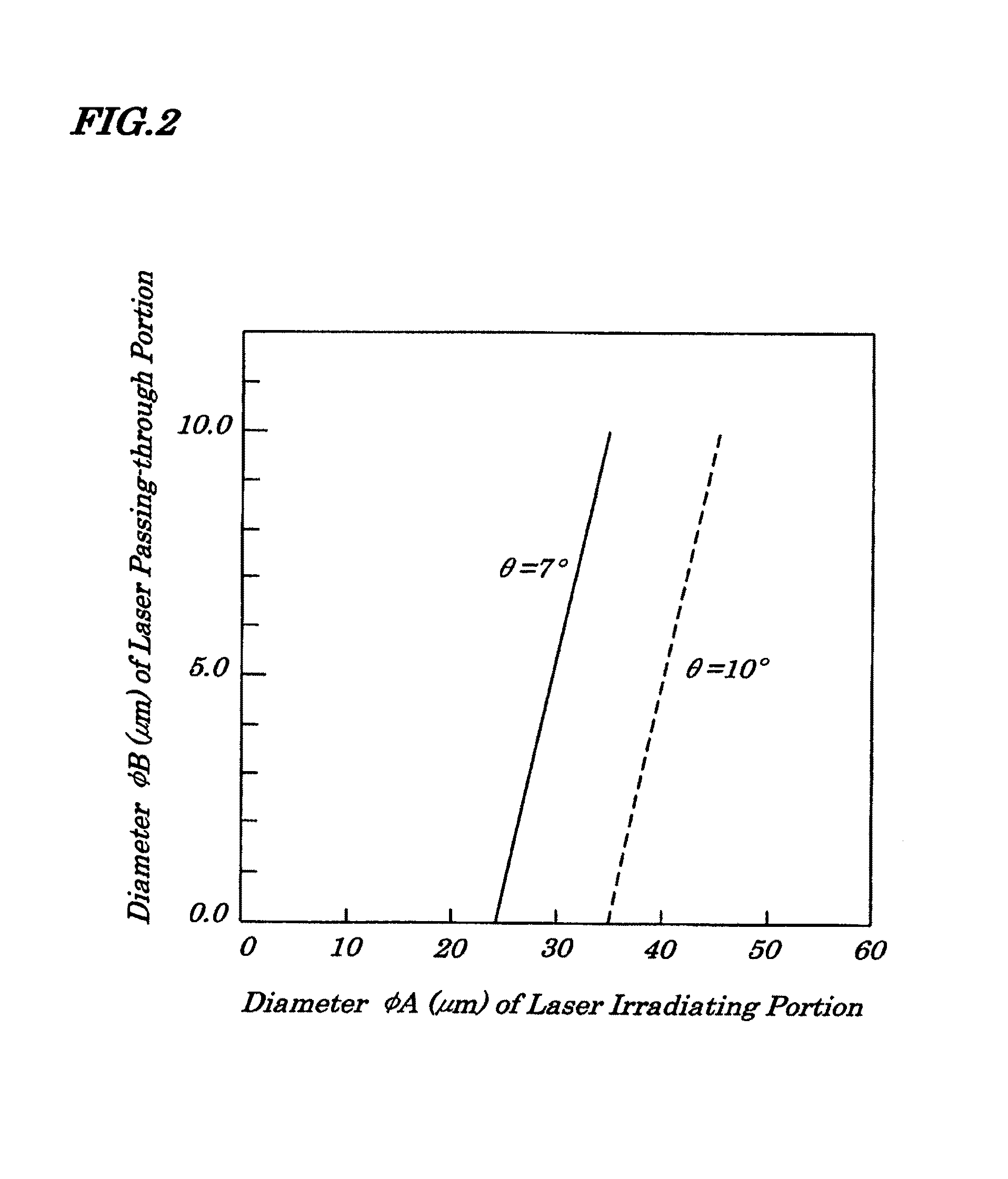Electromagnetic relay
a technology of electromagnetic relays and relays, applied in electromagnetic relays, electrical apparatus, electromagnetical relay details, etc., can solve the problems of easy hermeticity, operational failure, contact failure of contact portions, etc., and achieve high air permeability and water resistance, high water resistance, and shape and dimension control
- Summary
- Abstract
- Description
- Claims
- Application Information
AI Technical Summary
Benefits of technology
Problems solved by technology
Method used
Image
Examples
first embodiment
[0035]FIGS. 1A and 1B are diagrams showing an electromagnetic relay according to a first embodiment of the present invention and FIG. 1A is a perspective view of a molded resin cover 1 with its aperture portion faced upward and FIG. 1B is an expanded diagram showing portions 6 (6a, 6b) where laser-beam irradiation was performed. In the first embodiment, laser beam is applied surely from an inside of the molded resin cover 1, that is, from a face being opposite to a main body of the electromagnetic relay. Such a technology of applying laser beam is provided by, for example, Shinozaki Manufacturing Co., Ltd (Japan). In an example of forming a shape like this, a relation of a diameter φA of the laser-beam irradiated portion 6a and a diameter φB of the laser-beam irradiated portion 6b is shown by an equation φA−2 tanφ·t=φB. FIG. 5 is a cross-sectional view showing a relation between the diameter φA of the laser beam irradiated portion (laser beam coming-in side) and the diameter φB of t...
second embodiment
[0039]FIGS. 3A and 3B are diagrams illustrating an electromagnetic relay according to a second embodiment of the present invention; and FIG. 3A is a perspective view of a molded resin base 4 on which a main body of the electromagnetic relay is mounted and of portions 7 in which laser beam was applied and FIG. 3B is an expanded perspective view of portions 7 in which laser beam was applied. In the first embodiment, laser beam is applied surely from an inside of a molded resin cover 1. Instead the configuration of the first embodiment, in the second embodiment, one or more through-holes are formed by applying laser beam to desired positions of the molded resin base 4 from an inner surface side thereof, the desired positions which are not covered with a sealing resin 5 on an outer surface side thereof.
[0040]When a plurality of laser-beam irradiated portions 7 (7a, 7b) each having a structure shown in FIG. 3B is to be formed, the laser-beam irradiated portions 7a are provided with pitch...
third embodiment
[0043]FIG. 4 is an expanded sectional view of a molded resin cover 1 made of a liquid crystal polymer 8 of the third embodiment which is applied to an electromagnetic relay shown in FIGS. 6A and 6B. It is a characteristic of the liquid crystal polymer 8 that it becomes liquid crystal phase when being in a melted state. As shown in FIG. 4, the molded resin cover 1 is of a three-layered structure including a first skin layer 9 with identical orientation of the liquid crystal formed on a surface side, a second skin layer 9 with identical orientation of the liquid crystal formed on a rear side, and a core layer 10 with random orientation of the liquid crystal formed between the first and second skin layers 9. When air ventilating openings are formed by laser beam irradiation, laser beam is not allowed fully to pass through the liquid crystal polymer 8 and allowed to pass through only the first and second skin layers 9. The first and second skin layers 9 have identical orientation of the...
PUM
 Login to View More
Login to View More Abstract
Description
Claims
Application Information
 Login to View More
Login to View More - R&D
- Intellectual Property
- Life Sciences
- Materials
- Tech Scout
- Unparalleled Data Quality
- Higher Quality Content
- 60% Fewer Hallucinations
Browse by: Latest US Patents, China's latest patents, Technical Efficacy Thesaurus, Application Domain, Technology Topic, Popular Technical Reports.
© 2025 PatSnap. All rights reserved.Legal|Privacy policy|Modern Slavery Act Transparency Statement|Sitemap|About US| Contact US: help@patsnap.com



